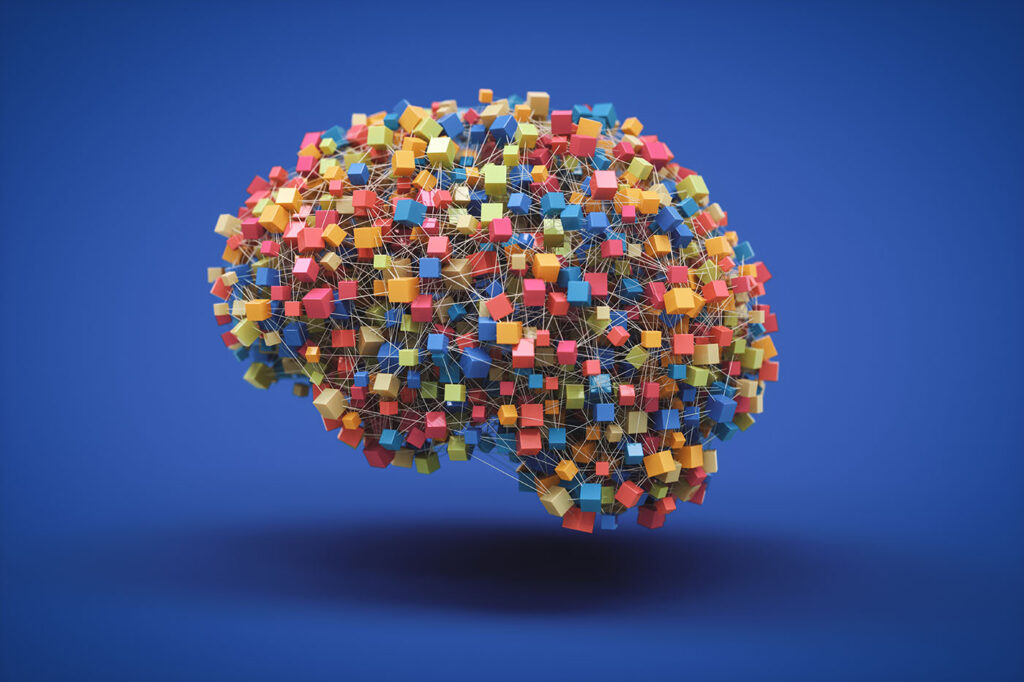A new open-source model of brain metabolism, developed by scientists at École Polytechnique Fédérale de Lausanne (EPFL), has shown how altering key chemicals could restore aged cells to their youthful activity and resilience.
The data-driven molecular model, based on existing data on the neuro-glia-vascular (NGV) system is, the team suggests, the most comprehensive and complex computer model of brain metabolism generated to date, incorporating more than 16,800 biochemical interactions between proteins and chemicals across brain cells, supporting cells, and the blood.
The model provides a way to examine the highly complex system of biochemical reactions that support metabolism in the brain. The simulations show metabolic differences between young and old brains, both at rest and during electrical stimulation.
The results revealed how age-related changes to metabolism affect the ability of neurons to generate electrical impulses that are key to signaling in the brain. In addition, the model predicts lower supply and demand for energy in older brain cells, and that, as we age, the metabolic system becomes less adaptable, and less able to recover from damage or respond to change.
The resource could help scientists identify and test ways to protect and repair brain function during aging, for example via diet, exercise, and new drug targets.
“This study provides an x-ray view into the battery that powers the brain,” said Henry Markram, PhD, Professor of Neuroscience at EFPL, who is senior author of the scientists’ published paper in Frontiers in Science. “We can now track how the energy system of the brain ages at the molecular level.” In their report titled “Breakdown and repair of metabolism in the aging brain,” the researchers concluded “This open-source resource should help accelerate research to improve our understanding of age-related neurodegenerative diseases (such as dementia) and how their onset could be prevented or delayed.”
Globally, the number of people living with dementia is projected to increase from approximately 57 million cases in 2019 to 153 million in 2050, due largely by population growth and an aging population, the authors commented. “Improving our understanding of the pathophysiology of age-related neurological degeneration is vital to identify new targets, interventions and biomarkers,” they stated. And while traditional biomedical research techniques are important to help identify key factors, they can’t provide a comprehensive understanding of all the data and complex relationships, the team continued. Complementary computational techniques that create data-driven models could open up new opportunities to help improve this understanding. “With these in silico experiments we can uniquely probe the functions of complex biochemical and cellular networks to gain insights and more efficiently guide future laboratory initiatives.”
The researchers built their model using publicly available data detailing the gene activity of brain cells in humans and mice. The detailed simulation – an analysis of complex interactions between neuronal activity, metabolism, and blood flow – provides a glimpse into how brain metabolism breaks down with age and impairs its function, as well as identifying actionable potential approaches to restore youthful resilience.
We place heavy demands on our brain’s neurons to navigate our everyday lives. This requires a lot of energy and support, which comes from the blood supply and supporting ‘glial’ cells called astrocytes. As well as brain neurons, the model includes glial cells called astrocytes, which perform many important roles to support and maintain the neurons. It allows simulation of the movement of chemicals within and between these cells, and between these cells and their environment. Importantly, it also allows modelling of the supply of nutrients to brain cells via the bloodstream.
To understand the impact of aging on the brain’s metabolism, the team used the model to compare the metabolic states of young and aged brains. In all, they calculated the impact of age-related changes on 16,800 interactions between proteins and chemicals across neurons, glia, and the blood.
In their report, the team claimed, “This is the most comprehensive molecular model of the neuro-glia-vascular system to date, integrating the key cellular and subcellular systems, molecules, metabolic pathways, and processes required to couple neuronal electrical behavior with brain energy metabolism and blood flow.”

The model revealed that changes in the amounts of certain molecules can have complex knock-on effects, affecting many different metabolic reactions at once. This meant the cells were more vulnerable to damage as they were less able to adapt and recover.
Lead author Polina Shichkova, PhD, commented, “We were surprised by the interdependencies of molecular reactions, tight regulation, and signaling within this system. We showed how the fragility of brain metabolism results from the collapse of many metabolic pathways, not just one, a finding that calls for multiple target therapies.”
When they compared the results to experimental data not used for training, the model accurately predicted changes in biochemical activity in neurons with age. This verified its usefulness as a research tool and the value of its findings. “We validated the model extensively against reported experimental data (not used to construct the model) on how enzyme and transporter activities and metabolite concentrations change in response to stimulation,” the scientists noted. “The consistency between the simulation and experimental data suggests that the model accurately captures the most essential elements of the metabolic system of the brain.”
The model could also be used to understand the impact of genetic mutations, enzyme deficiencies, and the effects of different treatments or interventions. Such findings could help guide laboratory or clinical experiments to test potential new treatments.
Shichkova said, “This modeling approach was needed due to the complexity of the system, which cannot be easily studied experimentally. While the model was built from experimental data, the simulation’s predictions of the behavior of the molecular network will in turn guide further biological research.”
The discovery allowed the team to understand the complex molecular mechanisms that determine the robustness, flexibility, and adaptability of the aging brain. By altering the amounts of key chemicals, the researchers found that the aged cells could be restored back to their youthful activity and resilience.
The researchers used the model to identify possible drug targets that could restore resilience to brain cells. They identified a transcription factor (TF) called estrogen-related receptor alpha (ESRRA), which is connected to the predicted age-related decline. “This TF regulates the expression of multiple metabolism-related genes, including those of mitochondrial function, biogenesis, and turnover, as well as lipid catabolism,” the authors reported. This finding, they suggest, could lead to further research into developing effective treatments to support aging neurons.
In addition to highlighting potential drug targets, the model indicated the potential benefit of supplementing with nicotinamide adenine dinucleotide (NAD) – a molecule that plays a vital role in the brain’s energy supply. NAD-boosting supplements have been previously studied as a potential healthy aging therapy.
The team’s analysis of the model’s results also found where lifestyle changes could help to restore the brain’s metabolic adaptability. Their findings indicated three chemicals whose levels could be altered through lifestyle changes. These included reducing blood glucose, which is achievable through diet, increasing β-hydroxybutyrate, a type of ketone, in the blood, which is in addition achievable through diet, and increasing blood lactate, which is achievable through physical exercise.
These findings correspond with other proposed anti-aging interventions. The ketogenic diet and caloric restriction, for example, raise the levels of β-hydroxybutyrate and lower glucose in the blood. Exercise, meanwhile, helps to improve brain health and slow aging by increasing blood lactate levels.
“The model predicted reduced robustness, flexibility, and metabolic adaptability in the aged brain and identified various aging-associated transcription factors and potential anti-aging therapies and strategies,” the investigators further in their paper. “The promising combination therapy identified in this study, which includes diet, exercise, NAD supplementation, NAD shuttle, and Na+/K+-ATPase modulation, agrees well with proposed anti-aging interventions such as caloric restriction, the ketogenic diet, and exercise.”
Shichkova added, “While there are usually many steps between a computational model’s predictions and practical guidance for people, some of the suggestions of our model include already approved supplements, dietary changes, or lifestyle habits. Our findings go beyond what we already knew about these lifestyle factors. Our model offers a detailed molecular mechanism of these practices, which will help guide researchers to develop more precise or effective interventions.” While noting limitations of their research, the authors concluded, “… this comprehensive data-driven, molecular-level model of the NGV system offers a novel research tool to couple neuronal electrical behavior with brain energy metabolism and blood flow.”
The study was part of the Blue Brain Project, which aimed to develop simulations and reconstructions of the mouse brain. The model will be available on the Open Brain Platform hosted by the Open Brain Institute, allowing neuroscientists to run simulations based on the research.
The team hopes this will help accelerate research into age-related neurodegenerative diseases, such as dementia. Energy metabolism is a potential root cause of such conditions, so further research on this, as well as validating the findings in human subjects, might help find new ways to boost the brain’s defenses.


